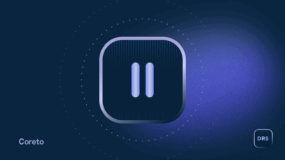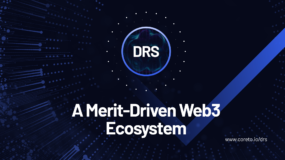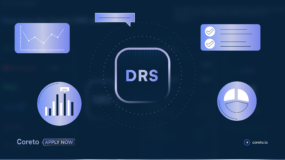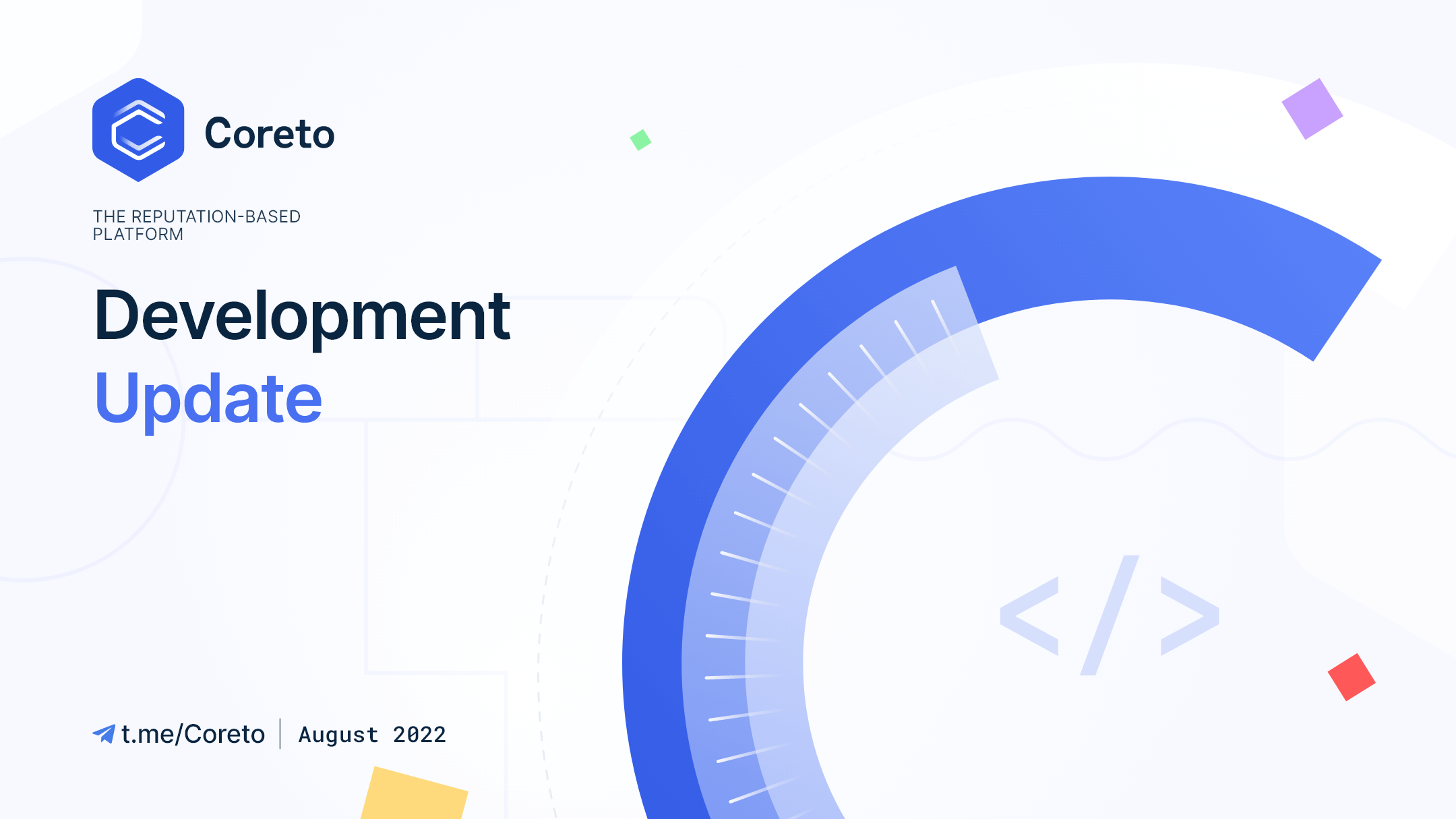
Last month we announced our decision to adopt NEAR Protocol as the underlying technology for our Decentralized Reputation System (DRS) and many other Coreto Platform features.
Today we are taking the first step in this direction, with the release of the very first version of our DRS, running on the NEAR testnet.
Let’s have a look at what this all means for the moment, and what you can look forward to in the near future – pun not intended 🙂
Decentralized Reputation System – Overview
First let’s talk about what the Decentralized Reputation System (DRS) is, what its role is and how it’s built.
In order to reach our end goal of building a healthier ecosystem in the crypto space, we at Coreto are building two main products: the Coreto Platform and the Decentralized Reputation System, which is the core of our Trust and Performance based reputation.
This separation was planned from the very beginning, as the DRS is a stand alone tool that is meant to be integrated into many other platforms – not just Coreto. As a reminder, Rev3al Techonologies and Forward Protocol are the first two on the list.
In order to have the flexibility of building and tracking the reputation on multiple platforms, positioned in different industries and having different KPIs for what Trust and Performance means for each case, we ended up with three main components:
- the Reputation Collection Service (RCS) – converting user actions into Trust and Performance points, based on predefined KPIs;
- the Decentralized Reputation Tracker (DRT) – receiving and storing the Trust and Performance points collected by the RCS on-chain, providing an immutable history of each user’s evolution over time;
- the Reputation Scoring Service (RSS) – converting the on-chain Trust and Performance history stored by the DRT into the final Reputation scores for each individual, using our unique Trust and Performance algorithms.
Together, these three main components are what we call the Decentralized Reputation System.
Each component is a very important part of the overall system, so we are taking great care towards security, stability, flexibility and reliability for each one.
Decentralized Reputation Tracking on NEAR Protocol
Now that we know what the overall system looks like, let’s have a look at where we stand right now.
The most important part of a truly Decentralized Reputation System is to have reliable data on-chain. This is the main reason why we started with the Decentralized Reputation Tracker.
Over the last few weeks, we have been hard at work, building the necessary smart contracts and related communication gateways, allowing us to track each user’s Trust and Performance points history on the NEAR blockchain.
The smart contracts are now deployed on the NEAR testnet, the blockchain communication API is in place, and we have just released the Coreto Platform update that connects it to the blockchain.
Reputation data is now being recorded on both the blockchain and the legacy system. Both systems will run in parallel for a time, allowing us to monitor and analyze the new system, and make any adjustments before we make the final switch.
What this means is that you can now connect a NEAR testnet wallet to your Coreto account and have your reputation tracked on-chain, as well as in the legacy system.
Once your NEAR testnet wallet is connected, you will see a new indicator next to your username, telling everyone that your reputation score comes directly from the blockchain – “DRS Enabled”.
Using the Decentralized Reputation System
NEAR is a sharded, proof-of-stake, layer-one blockchain that is simple to use, secure and scalable.
Many of you might be familiar with Ethereum and Ethereum Virtual Machine (EVM) compatible blockchains like Binance Smart Chain or Polygon. You might also be familiar with popular EVM compatible wallets like MetaMask. And while the NEAR blockchain can interact with EVM compatible chains by using Aurora (an EVM compatible layer 2 chain on NEAR), the NEAR layer one chain is not EVM compatible and tools like the MetaMask wallet are not compatible.
But don’t let that scare you! The official NEAR wallet follows the same principles that you are already familiar with while providing an user friendly, easy to use interface.
And while we will not be using the mainnet wallet, you can read more about the NEAR wallet here and get familiar with its interface and features.
How do I get a NEAR testnet Wallet?
To get started, first go to https://wallet.testnet.near.org/ and click “Create Account”.
- Creating an Account
First, choose your account name. Each account created in the NEAR Wallet is appended by .testnet, which is part of the account name. For example, choosing satoshi will create the satoshi.testnet account name.
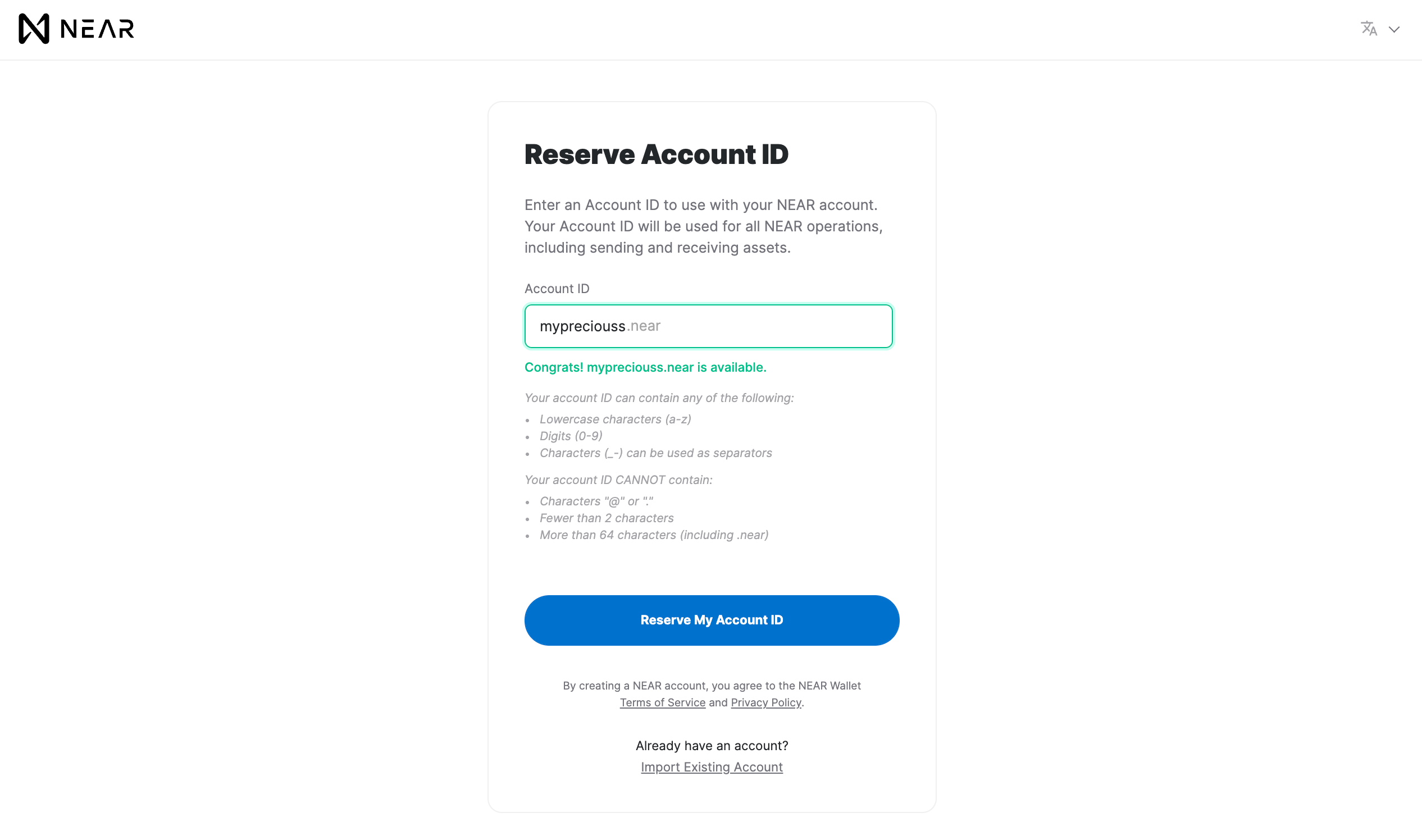
- Choosing the Recovery Method
Next, you will choose your account recovery method. The NEAR Wallet is entirely non-custodial, which means account access is your responsibility. There are multiple methods of account access. After creating your account, you can choose to enable multiple methods.
In our example, we will be using the “Secure Passphrase” option.
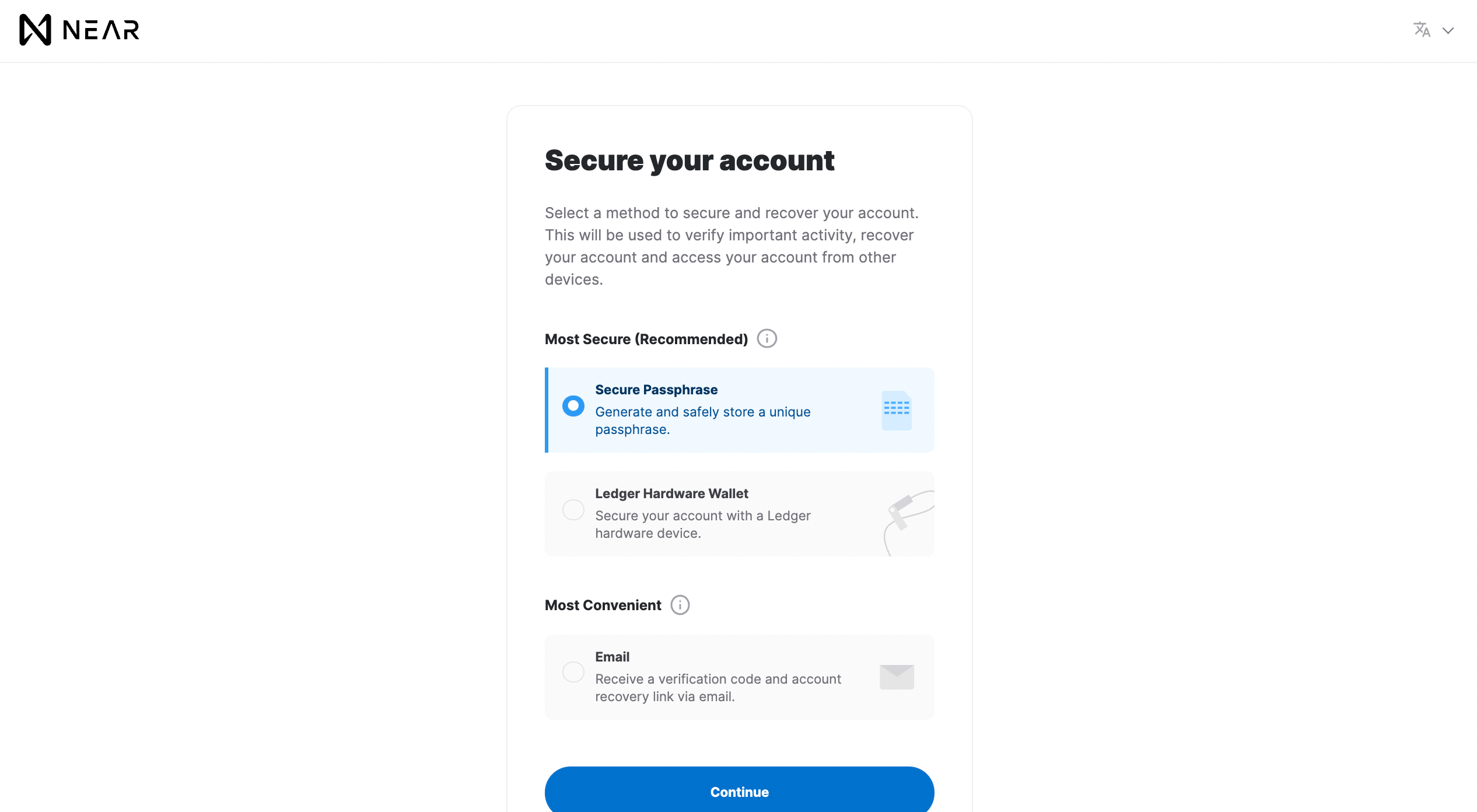
- Recovery (Seed) Phrase
Write down a twelve seed word recovery phrase. Even if this is a testnet wallet, it’s important to save your 12 word passphrase in a secure place, and be careful not to lose it. You will need it to keep control of the wallet you will connect to the Coreto Platform, as you will not be able to change it for a while.
Important: The seed phrase is only as secure as your storage of it! If you want to retain access to your account, you MUST write down your seed words in order, and store them securely. If you lose your seed words, you lose your account forever.
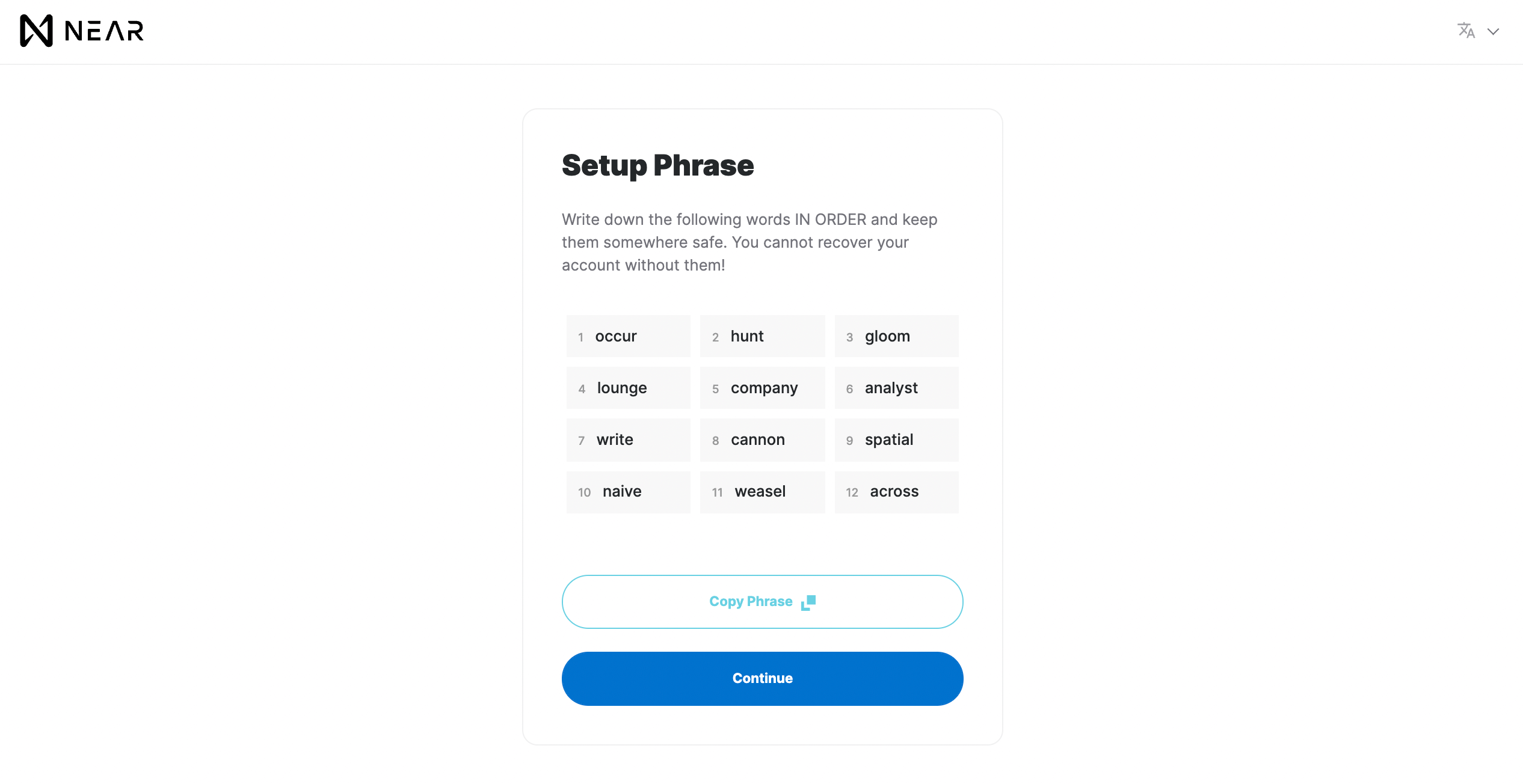
- Funding Your Account
Usually, while using the testnet, you will be automatically provided a random amount of testnet NEAR tokens for your account.
In the rare case that you don’t receive any testnet tokens to fund your wallet with, you can use near-faucet.io to get some. Just connect your wallet and claim up to 20Ⓝ testnet Near every hour.

How do I connect my NEAR testnet wallet to Coreto?
Once you have your NEAR testnet wallet, the process of connecting it to the Coreto Platform and enabling your on-chain reputation is very simple – just follow the steps below.
Whether you already have your Coreto account, or you are just creating one, the steps are the same, and you can decide to have your reputation tracked on-chain at any time.
- After logging in on the Coreto Platform, go to your profile settings and access the Coreto DID tab.
Here you will need to click on the “Connect Wallet” button.
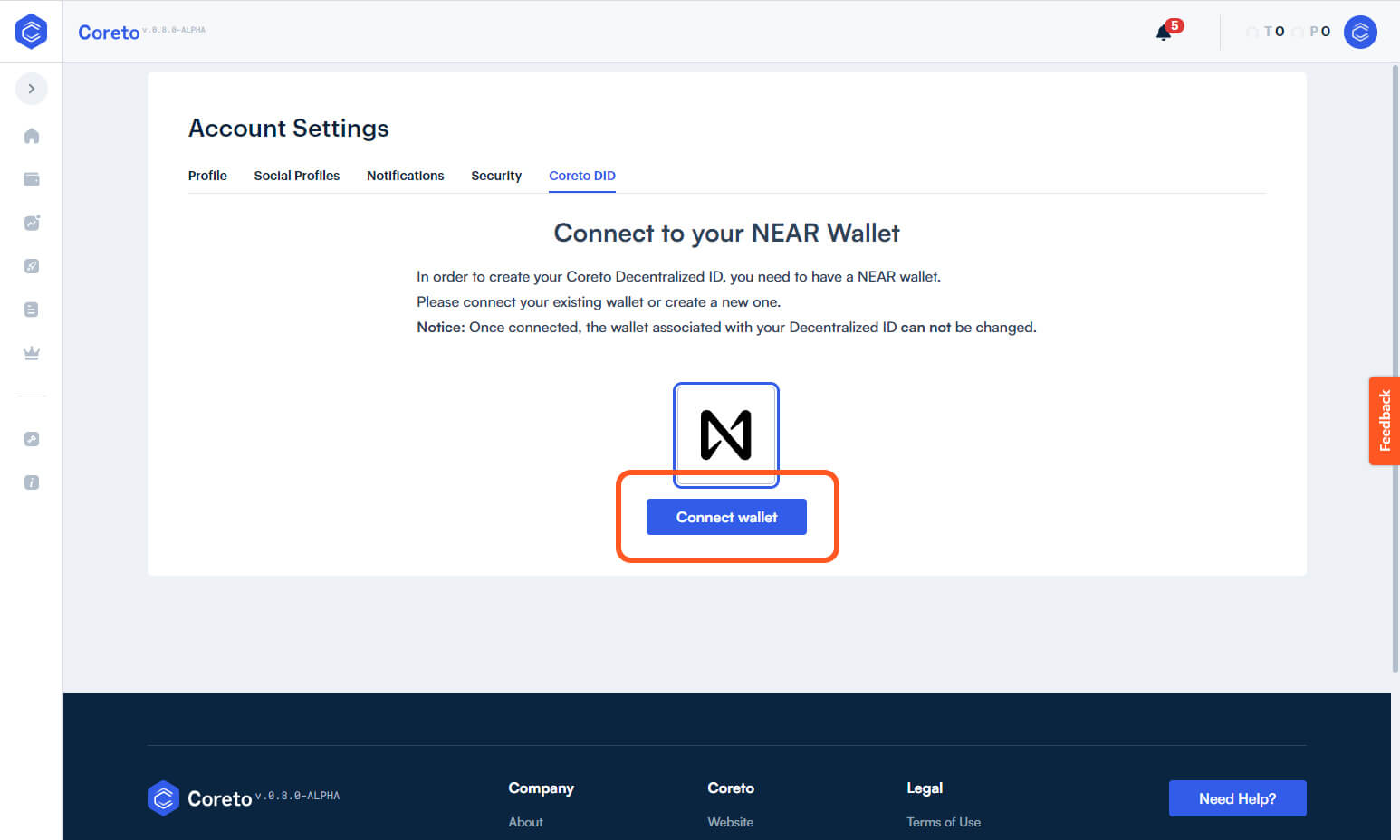
- You will be taken to the NEAR testnet wallet interface where you will need to select the wallet that you want to use from the list of available wallets you have. Or you can just create a new one.
Just select the one you like and click “Next”.
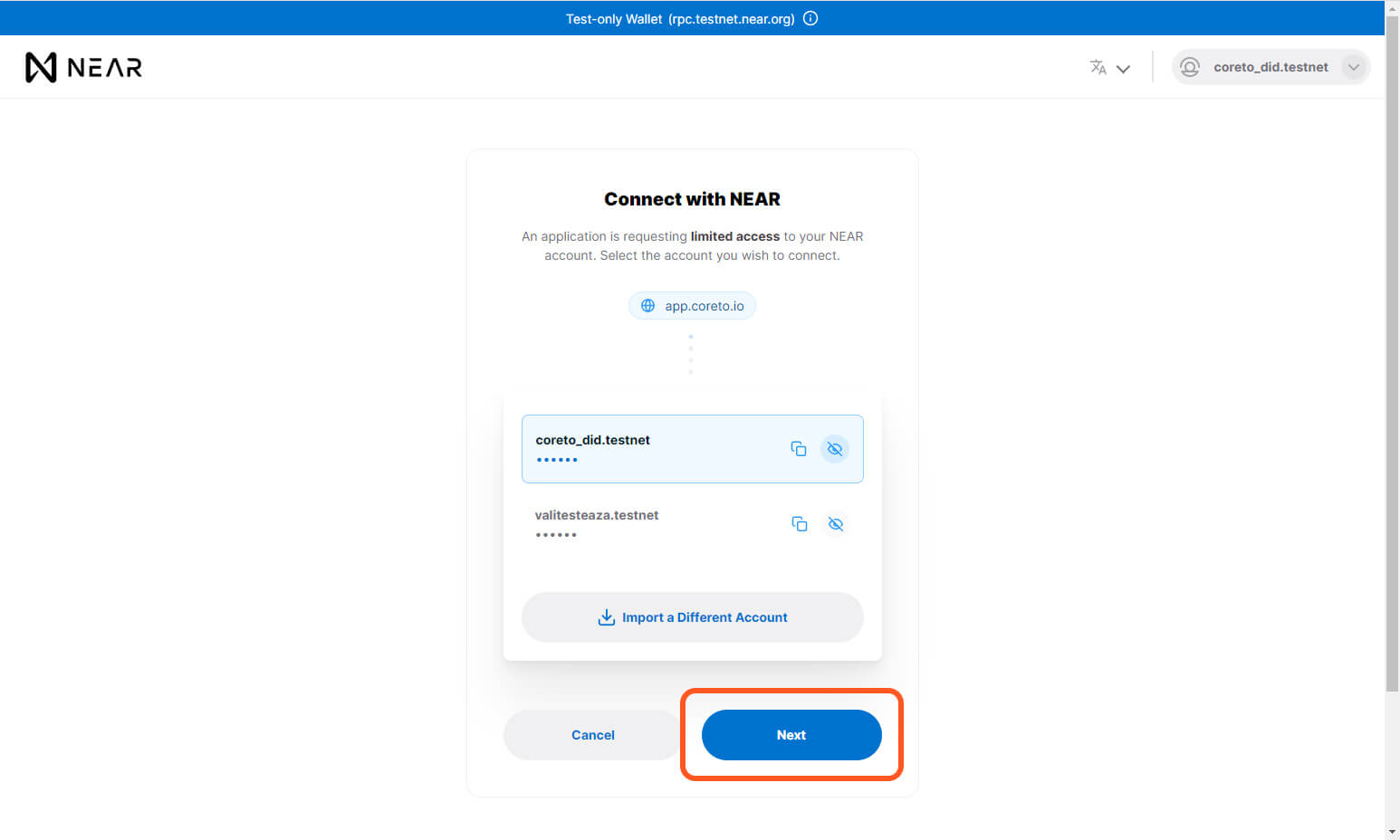
- On the next screen, you will need to approve connecting your wallet to the platform.
Just click the “Connect” button.
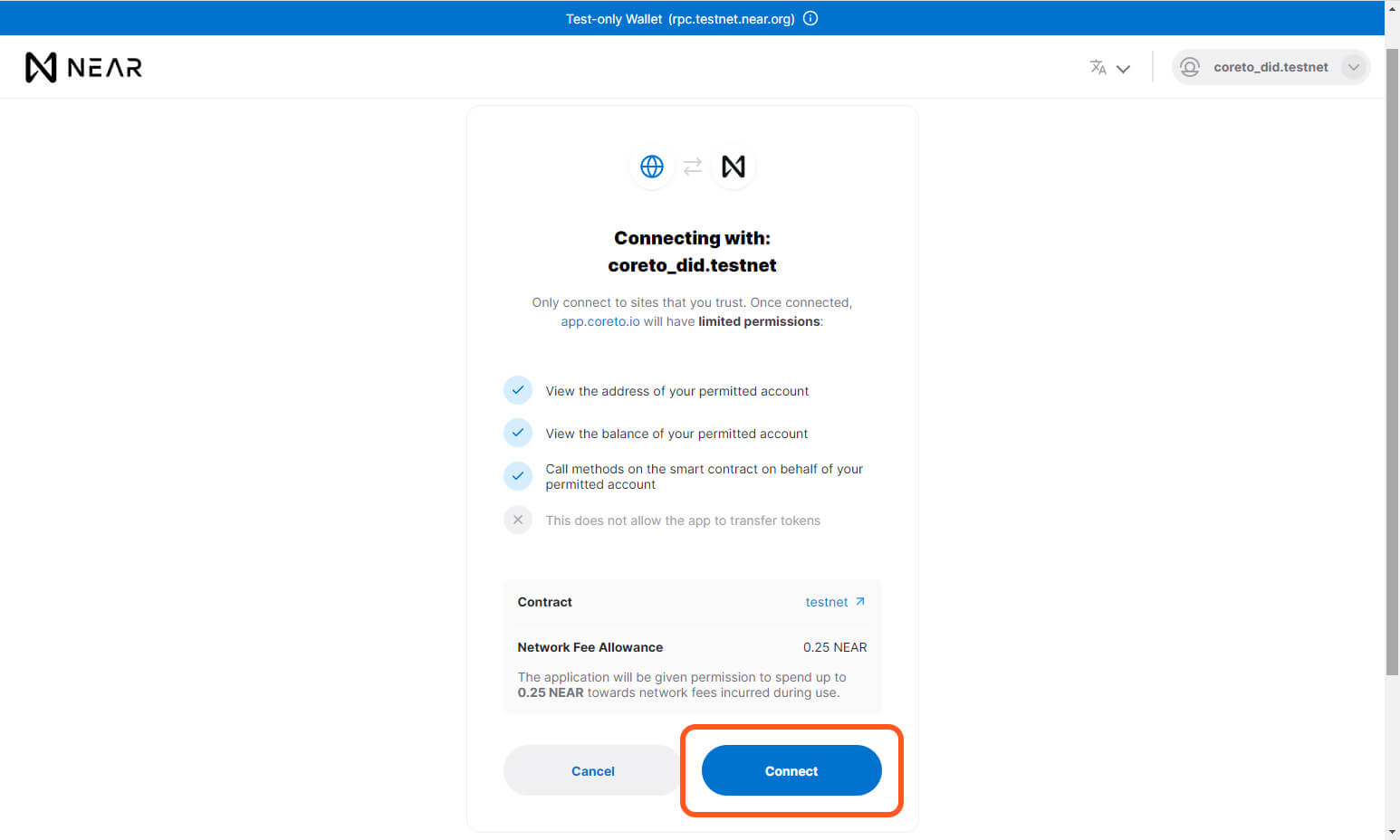
- Your wallet is now connected and you will be taken back to the Coreto Platform.
That’s it!

IMPORTANT: Remember that you will not be able to change your connected NEAR testnet wallet for the time being, so be careful to use the correct wallet, and have your seed phrase backed up in a secure location before everything else!
The future of Coreto’s DRS
Since this is the very first step in building and releasing the Coreto Decentralized Reputation System, we wanted to keep things simple and take it step by step.
Next stop – the Coreto Decentralized ID (DID)
For the moment, your NEAR testnet account is used as the on-chain identity while tracking your reputation. Naturally, those of you concerned about privacy will raise an eyebrow. And while your public address being used as the on-chain identity will NOT pose any security risks, true anonymity is one of the foundational aspects of blockchain technology.
This is why we have already built the Coreto Decentralized ID!
The Coreto DID is a way to privately and securely keep track of each user’s on-chain identity without exposing any identifiable information about your wallet or account. Once released, your on-chain identity will no longer be directly linked to your wallet and instead be linked to an encrypted, anonymized on-chain identifier.
Your Coreto DID will not even store any platform data, only the bare minimum information that will allow the two systems to communicate and coordinate.
Another feature that will become available once the Coreto DID is released will be the ability to change your connected NEAR testnet wallet, allowing you to recover your on-chain identity and reputation in case access to your original wallet is lost.
The Coreto DID will have an even bigger role in the future, but we will talk about its growing role as we move forward with development.
Expanding the system
As we have already talked about, there are two more important components that make up the Decentralized Reputation System: the Reputation Collection Service (RCS) and the Reputation Scoring Service (RSS).
Development for both is already underway, and while we are focusing on the DRT and DID for now, the overall system is already taking shape behind the scenes.
Once finished, the Decentralized Reputation System will be ready for adoption by any online platform, while also powering the Coreto Platform.
We are very excited by the future of both the DRS and the Coreto Platform! And while we have already come a long way, we have so much more ahead of us.

